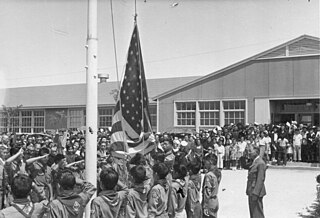
During the early years of World War II, Japanese Americans were forcibly relocated from their homes on the West Coast because military leaders and public opinion combined to fan unproven fears of sabotage. As the war progressed, many of the young Nisei, Japanese immigrants' children who were born with American citizenship, volunteered or were drafted to serve in the United States military. Japanese Americans served in all the branches of the United States Armed Forces, including the United States Merchant Marine. An estimated 33,000 Japanese Americans served in the U.S. military during World War II, of which 20,000 joined the Army. Approximately 800 were killed in action.

Northern California is a geographic and cultural region that generally comprises the northern portion of the U.S. state of California. Spanning the state's northernmost 48 counties, its main population centers include the San Francisco Bay Area, the Greater Sacramento area, the Redding, California, area south of the Cascade Range, and the Metropolitan Fresno area. Northern California also contains redwood forests, along with most of the Sierra Nevada, including Yosemite Valley and part of Lake Tahoe, Mount Shasta, and most of the Central Valley, one of the world's most productive agricultural regions.
Brothers James Lloyd "Jim" Mitchell and Artie Jay Mitchell were American entrepreneurs. They operated in the pornography and striptease club business in San Francisco and other parts of California from 1969 until 1991 when Jim was convicted of killing Artie.
The Mission District, commonly known as the Mission, is a neighborhood in San Francisco, California. One of the oldest neighborhoods in San Francisco, the Mission District's name is derived from Mission San Francisco de Asís, built in 1776 by the Spanish. The Mission is historically one of the most notable centers of the city's Chicano/Mexican-American community.
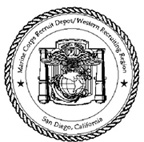
Marine Corps Recruit DepotSan Diego is a United States Marine Corps military installation in San Diego, California. It lies between San Diego Bay and Interstate 5, adjacent to San Diego International Airport and the former Naval Training Center San Diego. MCRD San Diego's main mission is the initial training of enlisted male and female recruits living west of the Mississippi River. Over 21,000 recruits are trained each year. As of 2022, 1.5 million recruits have completed their boot camp training at the Depot. The Depot also is the home to the Marine Corps' Recruiter School and Drill Instructors School.

Japantown, also known historically as Japanese Town, is a neighborhood in the Western Addition district of San Francisco, California. Japantown comprises about six city blocks and is considered one of the largest and oldest ethnic enclaves in the United States.

The California State Capitol Museum consists of a museum in and grounds around the California State Capitol in Sacramento, California, United States. The building has been the home of the California State Legislature since 1869. The State Capitol Museum has been a property in the California State Parks system since 1982.
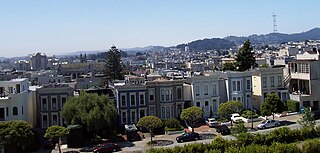
The Western Addition is a district in San Francisco, California, United States.
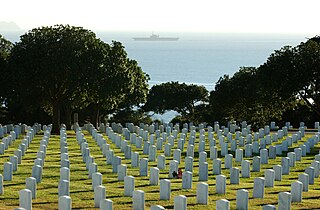
Fort Rosecrans National Cemetery is a federal military cemetery in the city of San Diego, California. It is located on the grounds of the former Army coastal artillery station Fort Rosecrans and is administered by the United States Department of Veterans Affairs. The cemetery is located approximately 10 miles (16 km) west of Downtown San Diego, overlooking San Diego Bay and the city from one side, and the Pacific Ocean on the other. Fort Rosecrans is named after William Starke Rosecrans, a Union general in the American Civil War. The cemetery was registered as California Historical Landmark #55 on December 6, 1932. The cemetery is spread out over 77.5 acres (31.4 ha) located on both sides of Catalina Blvd.
Sutter Health California Pacific Medical Center (CPMC) is a general medical/surgical and teaching hospital in San Francisco, California. It was created by a merger of some of the city's longest established hospitals and currently operates three acute care campuses.

The Tenderloin is a neighborhood in downtown San Francisco, in the flatlands on the southern slope of Nob Hill, situated between the Union Square shopping district to the northeast and the Civic Center office district to the southwest. Encompassing about 50 square blocks, it is historically bounded on the north by Geary Street, on the east by Mason Street, on the south by Market Street and on the west by Van Ness Avenue. The northern boundary with Lower Nob Hill has historically been set at Geary Boulevard.

Van Ness Avenue is a north–south thoroughfare in San Francisco, California. Originally named Marlette Street, the street was renamed in honor of the city's sixth mayor, James Van Ness.

Albert Pissis (1852–1914) was a prolific Mexican-born American architect, of French and Mexican descent. He was active in San Francisco and had studied at the École des Beaux-Arts in Paris, France. He is credited with introducing the Beaux-Arts architectural style to San Francisco, California, designing a number of important buildings in the city in the years before and after the 1906 San Francisco earthquake.

The Hunter–Dulin Building is a class A office building located at 111 Sutter Street in San Francisco, California.

Carl Nolte is an American journalist. He writes the "Native Son" column in the San Francisco Chronicle.
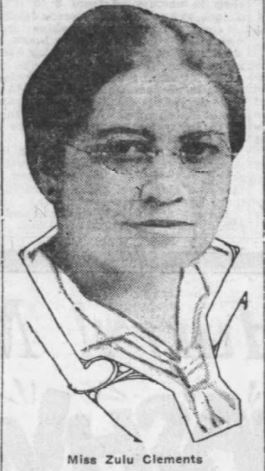
Zulu Clements was the president of the California Federation of Business & Professional Women's Clubs. She was the traffic manager for the Leslie Salt Co, and touted as "Woman Salt Baron".

Alfred Henry Jacobs was an American architect. He designed theaters, hotels, residential, and religious buildings, primarily working in the San Francisco Bay Area. Three of the buildings he designed are listed on the National Register of Historic Places. He also worked as a watercolorist.
National Japanese American Historical Society (NJAHS) is an American non-profit organization based in Japantown in San Francisco, California.


















